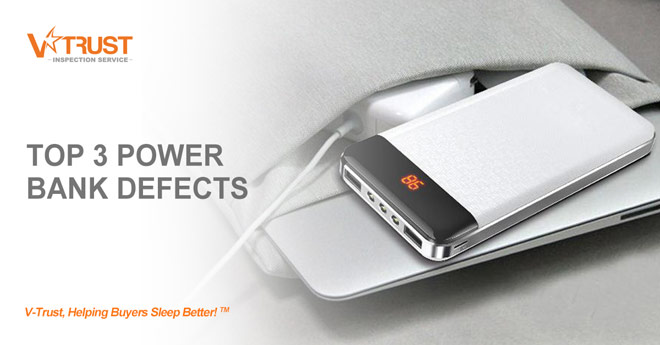Quick! Besides phone, keys, and wallet/purse, what’s one thing your customers can’t leave home without? If you said “power bank”, you’re not alone. If you’re importing these, you may already know that power bank consumption is skyrocketing, especially in light of power-hungry phones and tablets with 120 Hz screen refresh rates and 5G modems.
Grandview Research estimates the power bank market value to have been USD 6.8 billion in 2019, with massive growth projected for at least the next seven years. Unfortunately, as power bank popularity has grown, so have concerns of safety and quality as reports of lower-than-advertised capacity, or worse, exploding power banks have popped up on our newsfeeds recently.
So, what are the most common defects found in power banks, and what can importers do to proactively avoid these issues? Here are 3 of the most important defects that we check for during our inspections:
1. Low Battery Capacity

China’s State Administration for Market Regulation (SAMR) and state broadcaster CCTV recently conducted investigations which found that approximately 40% of power banks that were checked were faulty. The SAMR and CCTV cited the most common issues as being lower-than-advertised capacity, sub-par batteries that represent a fire or explosion hazard, or even fake battery cells that were found to be filled with sand when opened (source: SCMP).
To avoid these potentially dangerous issues, make sure to specify components in your component data form (CDF), certification standards, and performance requirement prior to production. A capacity check is a standard test in a professional inspection and can uncover low-quality battery cells.
2. USB Port Skewed or Damaged

A USB port that is askew or damaged can result in the unit not connecting properly or overheating, creating a fire hazard. This is due to poor assembly. This qualifies as a major defect when only hindering functionality, and can be a critical defect if it causes the device to heat up abnormally. If even a single critical defect is present, the entire inspection will be given a “Fail” result and it is recommended to reject the entire lot.
Request your supplier to make sure assembly is done with care and ensure all relevant testing is done to ensure safety. A close check of the USB ports during inspection can quickly identify issues with this component.
3. Not Able to Charge

This can be caused by either a faulty battery cell or a poor electronic circuit. If the current is disrupted, the charge will not flow and the power bank could be rendered unusable. Batteries are one of the most expensive components of a power bank, so unscrupulous suppliers may try to cut costs by using a low quality battery, or as mentioned previously, a fake battery filled with sand. A defect of this type will require reworking by the factory.
You can prevent these problems by conducting a Pre-Production Inspection on the quality of components, or During Production Inspection to check the quality of assembly and components at the production line against the confirmed CDF (Component Data Form) and quality of soldering.
To see how we inspect power banks, click here for a video of the how our engineers check all of these and more.
V-Trust can help you with Product Inspections and Factory Audits for your power bank supplier in China, India, Vietnam, Bangladesh, Thailand, or Malaysia. Our full-time inspectors and auditors will help to spot non-conformities to ensure the quality of your goods, and ultimately protect your reputation. Contact us at info@v-trust.com today for consultation.




Discussion